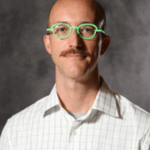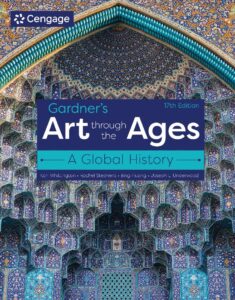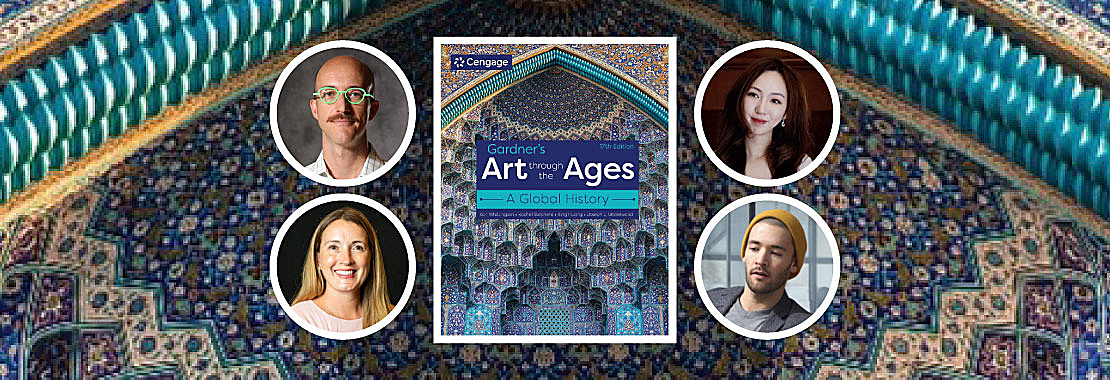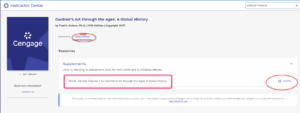Fred Kleiner has authored Cengage’s canonical art history title, “Gardner’s Art through the Ages: A Global History” for the past six editions. And now, we’d like to introduce ourselves as its four new co-authors. We’re all eagerly working to revise and reframe this title to match many of the current directions in the art history field.
Get to know us and learn why we’re excited about our upcoming changes to the 17th edition, to be released in 2027.
Get to know us: the new authors
Karl Whittington

My name is Karl Whittington and I am a historian of medieval European art. My research and teaching focuses on materiality, the history of science and gender and sexuality studies. I am a Professor of History of Art at The Ohio State University.
Rachel Stephens
My name is Rachel Stephens and I am a historian of the art of the United States. My research focuses on the political implications of 19th-century art and material culture in the South. I am a Professor of Art History at the University of Alabama.
Bing Huang
 My name is Bing Huang and I am a historian of Chinese art. My research and teaching span the intersections of art and technology, covering a wide chronology and geography. These areas range from Han-dynasty tomb architecture, Buddhist art and Chinese painting to the long eighteenth century and cross-cultural exchange between China and Europe, extending into AI-driven art and virtual reality. I am an Associate Professor of Art History at Providence College.
My name is Bing Huang and I am a historian of Chinese art. My research and teaching span the intersections of art and technology, covering a wide chronology and geography. These areas range from Han-dynasty tomb architecture, Buddhist art and Chinese painting to the long eighteenth century and cross-cultural exchange between China and Europe, extending into AI-driven art and virtual reality. I am an Associate Professor of Art History at Providence College.
Joseph L. Underwood
 My name is Joseph L. Underwood. I am a historian and curator whose research focuses on artists from the African continent and the Diaspora, especially artists from Senegal active between 1960-1985 and those practicing today. I am an Associate Professor of Art History at Kent State University.
My name is Joseph L. Underwood. I am a historian and curator whose research focuses on artists from the African continent and the Diaspora, especially artists from Senegal active between 1960-1985 and those practicing today. I am an Associate Professor of Art History at Kent State University.
What’s updated in our upcoming edition?
Many art history departments have recently re-thought their curricula or are in the process of doing so. Our 17th edition of “Gardner’s” responds to the global turn in the humanities, while remaining foundational and approachable for students. It offers broad, in-depth coverage of artworks and monuments that represent dominant trends in the history of art across the globe.
New perspectives
“Gardner’s” is known for its balanced coverage between both rigorous formal analysis and deep historical context. We’ve retained much of these directions while infusing additional global and comparative perspectives. We aim to complicate some of the longstanding narratives of the field. This is in line with the wealth of new scholarship in the past several decades.
New research
The organization of the text is still mostly chronological and regional. However, our new edition highlights recent research into cross-cultural interactions that sparked the movement of artworks and artists across the globe. And it expands coverage of many parts of the world. As co-authors, we’ve brought together an enormous amount of information and research to provide students with a solid grounding for an expansive study of art history. This coverage, combined with supplemental materials for class preparation, can help instructors teach courses on global art history that respond to the needs and interests of today’s students.
New methodologies
We have prioritized accessibility for students, while also aiming to encourage critical thinking and multiple perspectives on works of art. This edition encourages students to engage in critical dialogue and discuss pressing issues related to art history’s past, present and future. The 17th edition introduces artworks and monuments through multiple methodological perspectives at once. In addition to social-historical inquiry, formal analysis and iconography, students can look at art through the lens of politics, materiality studies, gender and race. Additionally, they may examine objects and monuments as actors that shape our culture.
Art, culture and identity
Today’s students care about how works of art intersect with the study of identity, both past and present. What can art and architecture tell us about how the people of the past lived, worked, loved, struggled and conceived of the world around them? We hope to draw students into these questions by offering new perspectives on some of the canonical works of global art and architecture.
We introduce hundreds of new works by artists and cultures. These are voices that may not have been as prominent in the field until recent years. This edition will help students see how studying art history can position them to be deeper and more critical thinkers about how visual culture shapes identity and experience in the modern world.
Art and technology
The evolving definition of art, the transformation of creative practice and the advent of AI are reshaping how art is created. They’re also reshaping how it’s encountered and understood in a technology-driven era. This edition emerges at a critical juncture for art-historical scholarship and human history. AI’s accelerating evolution is reconfiguring the conditions of cultural production and experience.
We’ve situated these developments within a broader historical continuum, illuminating how innovations, such as AI-driven media, are opening unprecedented aesthetic possibilities and cultural horizons. At the same time, we hope to cultivate a forward-looking imagination — one that bridges an understanding of the past with the capacity to envision the future of art in its ever-expanding forms.
Written by Karl Whittington of Ohio State University, Rachel Stephens of University of Alabama, Bing Huang of Providence College and Joseph L. Underwood of Kent State University.


